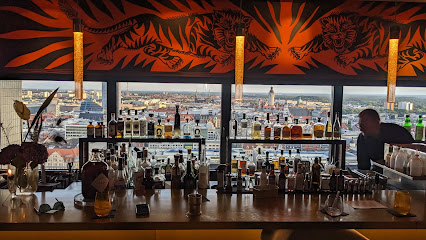
Citizens Committee Leipzig e.V. (Museum in the 'Round Corner')
Explore the chilling history of the Stasi at the 'Runde Ecke' in Leipzig, a powerful memorial to the Peaceful Revolution and a vital reminder of the importance of freedom.
The Citizens Committee Leipzig e.V., custodian of the 'Runde Ecke' (Round Corner) Memorial Museum, offers a chilling yet vital glimpse into the operations of the former East German secret police, the Stasi. Located in the former Stasi district headquarters, the museum meticulously documents the surveillance and repression tactics employed by the regime. Through exhibits of original documents, equipment, and reconstructed offices, visitors gain a profound understanding of the Stasi's pervasive reach and its impact on everyday life in the GDR. The museum also serves as a center for historical and political discourse, hosting regular discussions, film evenings, and lectures. It stands as a powerful reminder of the importance of democracy and the dangers of unchecked state power, making it a must-see for those interested in Cold War history and the legacy of the Peaceful Revolution that began in Leipzig.
A brief summary to Citizens Committee Leipzig e.V.
- Dittrichring 24, Leipzig, Mitte, 04109, DE
- +493419612443
- Visit website
Local tips
- Allow at least 2-3 hours to fully explore the museum's extensive exhibits and gain a deeper understanding of the Stasi's operations.
- Consider taking the audio guide for a more in-depth experience; it provides valuable context and insights into the exhibits.
- Combine your visit with a walk around Leipzig's city center to see other sites related to the Peaceful Revolution, such as St. Nicholas Church.
Getting There
-
Public Transport
The Citizens Committee Leipzig e.V. is easily accessible via Leipzig's excellent public transport network. From Leipzig Hauptbahnhof (main train station), take any tram that stops at Thomaskirche/Dittrichring (e.g., lines 1, 3, 4, 7, 9, 12, 14, 15). The museum is a short walk from the tram stop, located on Dittrichring 24. A short-trip ticket (Kurzstrecke) is sufficient for this journey, costing around €2.30.
-
Walking
If you are already in Leipzig's city center, the Citizens Committee Leipzig e.V. is within easy walking distance of many major attractions. From Augustusplatz, walk west along Grimmaische Straße, then turn left onto Dittrichring. The museum will be on your right, after passing the Thomaskirche. The walk is approximately 10-15 minutes.
-
Taxi/Ride-Share
A taxi or ride-share from Leipzig Hauptbahnhof to the Citizens Committee Leipzig e.V. will take approximately 5-10 minutes, depending on traffic. The fare will likely be in the range of €8-€12. Be sure to specify 'Dittrichring 24' as your destination.
-
Driving
If driving, be aware that parking in Leipzig's city center can be limited and expensive. Several parking garages are located near the Citizens Committee Leipzig e.V., including Q-Park Marktgalerie. Hourly rates typically range from €2.00, with daily maximums around €20.00. Alternatively, consider using a Park and Ride (P+R) facility outside the city center and taking public transport to the museum.
Discover more about Citizens Committee Leipzig e.V.
Iconic landmarks you can’t miss
Citizens Committee Leipzig e.V.
0.0 km
Explore the chilling history of the Stasi at the 'Runde Ecke' in Leipzig, a powerful memorial to the Peaceful Revolution and a vital reminder of the importance of freedom.
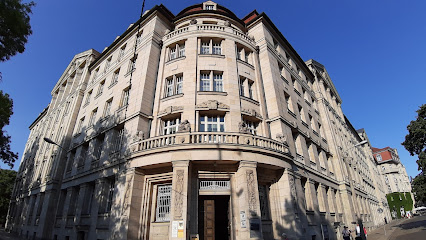
Monument der Erinnerung und Trauer
0.2 km
A poignant memorial in Leipzig honoring the destroyed Jewish synagogue and the victims of the Holocaust, urging remembrance and promoting tolerance in the city center.
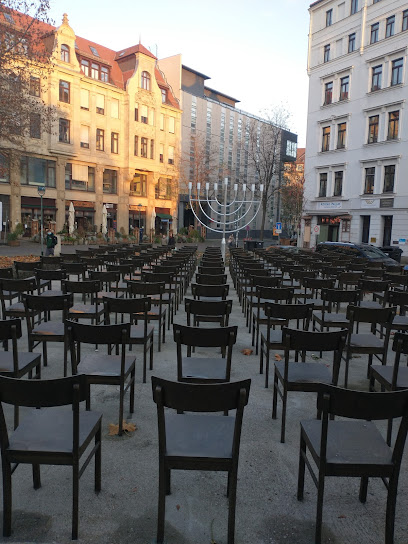
Lipsia Brunnen
0.2 km
Discover the Lipsia Brunnen in Leipzig: A tranquil oasis where art, history, and serenity converge, offering a timeless escape in the heart of the city near the historic coffee house.
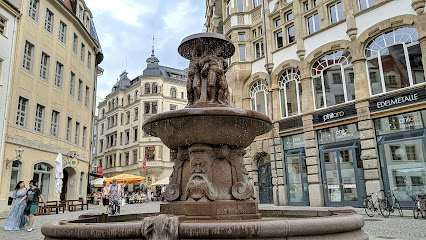
Katharinenstraße 17
0.3 km
Discover Kretschmanns Hof in Leipzig: A historic building with unique architecture, a vibrant cultural scene, and a passageway to the city's rich past, located in the heart of the city.

Аlte Waage
0.4 km
Discover Leipzig's historical gem, Allte Waage, where architectural beauty meets rich cultural heritage in the heart of the city.

Jahnallee 4
0.4 km
Explore Jahnallee 4 in Leipzig, a stunning blend of historical architecture and modern artistry, nestled in the city's vibrant cultural heart.
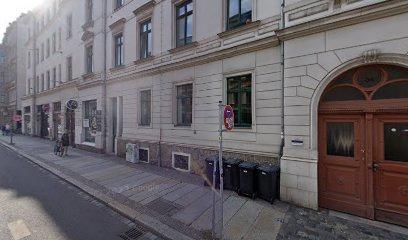
Faust and Mephisto Sculpture
0.4 km
Experience Goethe's Faust brought to life in bronze at the heart of Leipzig's elegant Mädlerpassage, where literary history meets upscale charm and a touch of Faustian legend.
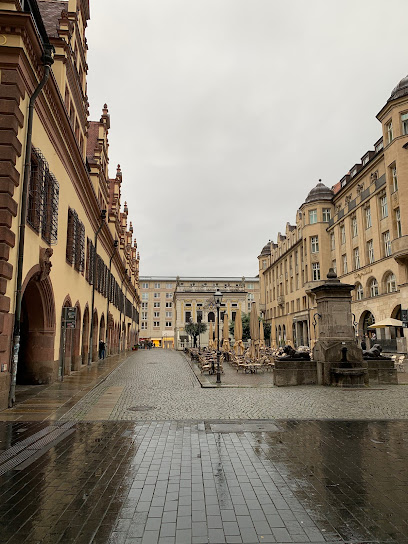
Böttchergäßchen 3
0.4 km
Explore Leipzig's captivating past at Haus Böttchergäßchen, the heart of the City History Museum, offering immersive exhibits, archives, and family-friendly experiences in the city center.

Pilzsäule
0.5 km
Discover the artistic charm of the Pilzsäule in Leipzig, a whimsical mushroom-shaped landmark that embodies the city's vibrant culture and history.
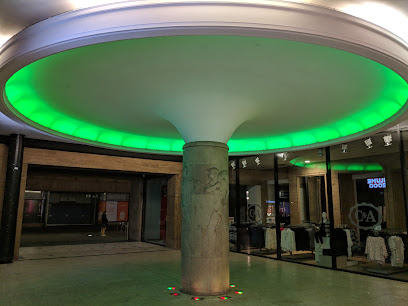
Leipzig Tours - Leipzig Stadtführungen - Walking Tours
0.6 km
Experience the rich history and vibrant culture of Leipzig through captivating guided walking tours, showcasing iconic landmarks and hidden gems.
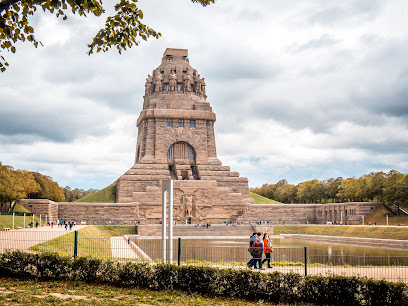
Museum of Antiquities of Leipzig University
0.6 km
Explore ancient Greek and Roman art and culture at the Museum of Antiquities of Leipzig University, home to a diverse collection of artifacts and plaster casts in the historic Alte Nikolaischule.
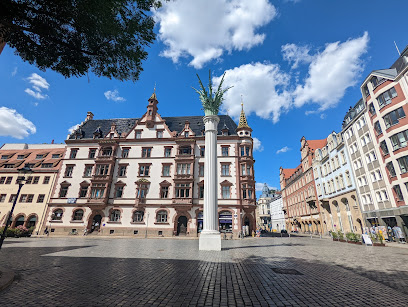
Schiller-Denkmal
0.7 km
A marble monument in Leipzig honoring Friedrich Schiller, the famous German poet who penned 'Ode to Joy' during his stay in the city, a testament to Leipzig's rich cultural heritage.
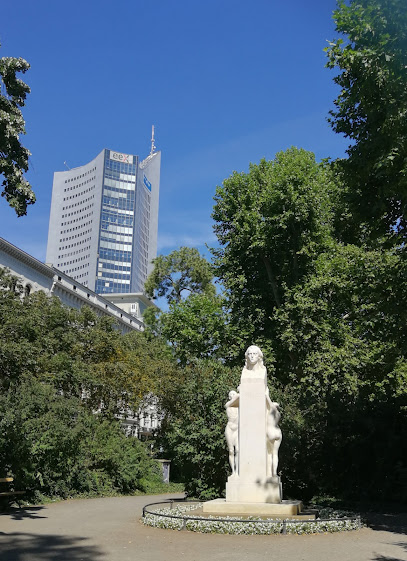
City-Hochhaus Leipzig
0.8 km
Experience Leipzig from Above: Ascend the City-Hochhaus, an architectural icon offering panoramic city views and a glimpse into Leipzig's vibrant history and modern skyline.
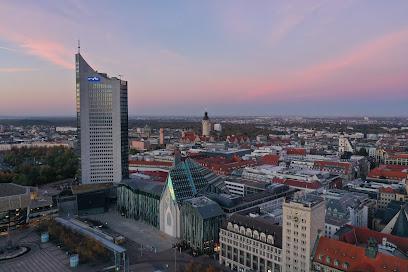
Bronze der Universitätskirche St. Pauli
0.8 km
A miniature bronze sculpture commemorating Leipzig's lost University Church, a poignant reminder of history and cultural heritage on Augustusplatz.
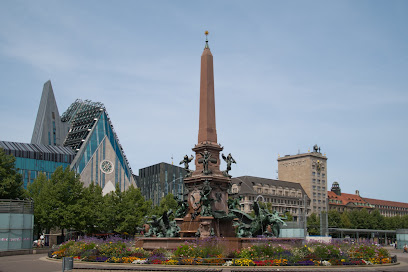
Demokratieglocke
0.8 km
Discover the Demokratieglocke in Leipzig, a historic bell symbolizing peace and democracy, set in the vibrant Augustusplatz.
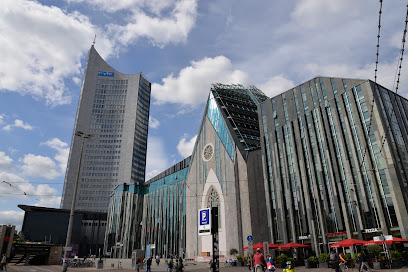
Unmissable attractions to see
Richard-Wagner Denkmal
0.1 km
Explore the Richard-Wagner Denkmal in Leipzig, a stunning tribute to the legendary composer amidst serene gardens and rich musical heritage.
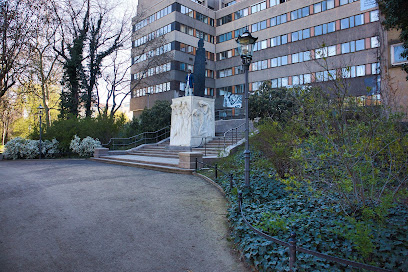
Schauspiel Leipzig
0.1 km
Experience the vibrant culture of Leipzig at Schauspiel Leipzig, a premier performing arts theater offering captivating plays and live music in a stunning venue.
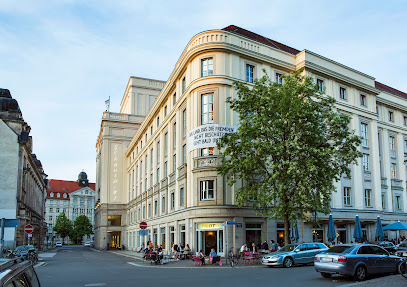
Holocaust Memorial
0.2 km
Explore the Holocaust Memorial in Leipzig, a profound tribute to resilience and remembrance, fostering understanding and tolerance through history.
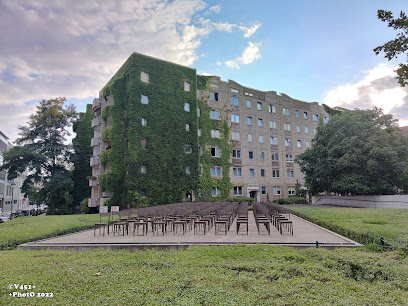
Hahnemann-Denkmal
0.2 km
Explore the Hahnemann Monument in Leipzig, a significant historical landmark honoring the founder of homeopathy amidst serene surroundings.
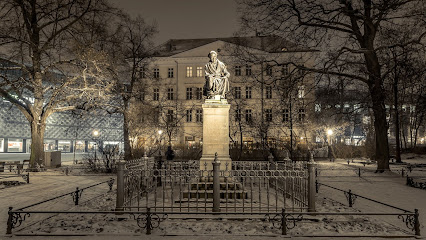
Barthels Hof
0.2 km
Discover Barthels Hof, a historic courtyard in Leipzig filled with shops, cafés, and art galleries that capture the city's vibrant spirit.
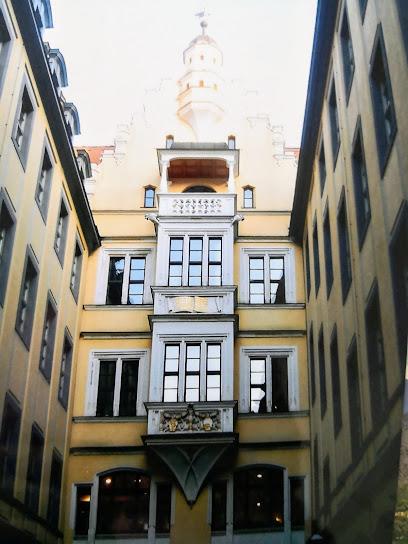
Richard-Wagner-Platz
0.3 km
Experience the vibrant cultural heart of Leipzig at Richard-Wagner-Platz, a must-visit destination for every traveler.
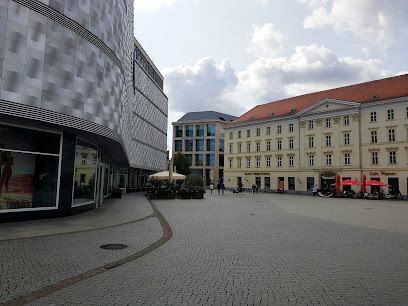
Mendelssohn Denkmal
0.3 km
Explore Leipzig's Mendelssohn Denkmal, a cultural landmark celebrating the legacy of composer Felix Mendelssohn amidst lush surroundings.
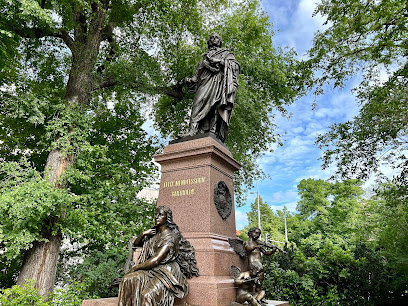
Pusteblumen-Brunnen
0.3 km
Experience the whimsical charm of the Pusteblumen-Brunnen, Leipzig's stunning Dandelion Fountain, a perfect blend of art and nature.
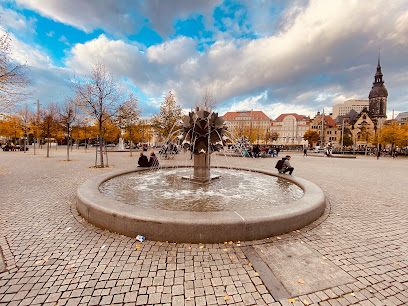
Dittrichring
0.3 km
Explore the vibrant Dittrichring town square in Leipzig, where history meets modern culture in a lively atmosphere.

St. Thomas Church
0.3 km
Explore the historic St. Thomas Church in Leipzig, a landmark of music and spirituality, home to the famous Thomanerchor and rich in cultural heritage.
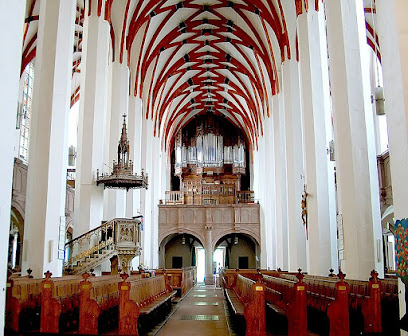
Altes Bach-Denkmal
0.3 km
Explore the Altes Bach-Denkmal in Leipzig, a historical landmark celebrating the legacy of Johann Sebastian Bach in a vibrant musical city.
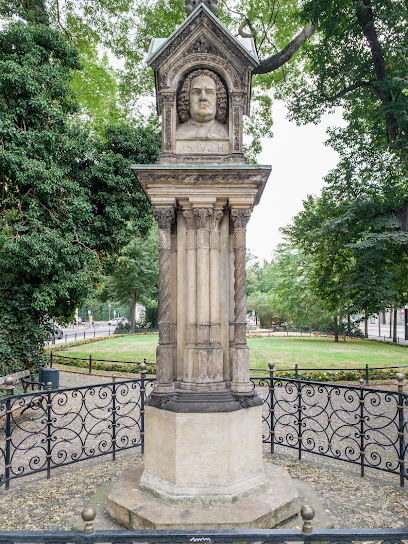
Neues Bach-Denkmal
0.3 km
Explore the Neues Bach-Denkmal in Leipzig, a stunning tribute to the great composer Johann Sebastian Bach, surrounded by rich cultural heritage.
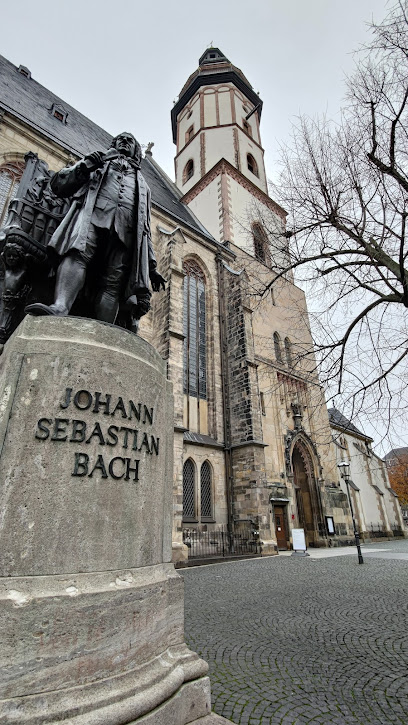
Marktplatz Leipzig
0.4 km
Explore the vibrant Marktplatz Leipzig, a historic market square rich in culture, architecture, and local flavors in the heart of the city.
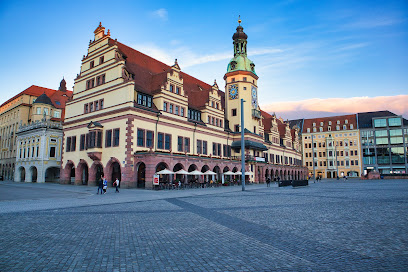
Bach-Museum Leipzig
0.4 km
Discover the life and legacy of Johann Sebastian Bach at the captivating Bach-Museum in Leipzig, where music history comes alive through interactive exhibits.
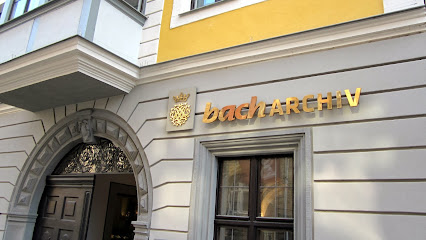
Romanushaus
0.4 km
Experience the charm and culture of Leipzig at Romanushaus, a unique blend of business center and tourist attraction in the heart of the city.
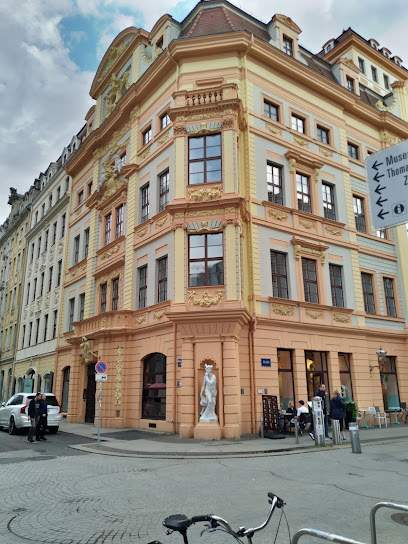
Essential places to dine
Wenzel Leipzig
0.2 km
Discover authentic Czech cuisine at Wenzel Leipzig, where traditional flavors meet warm hospitality in the heart of Germany's cultural hub.
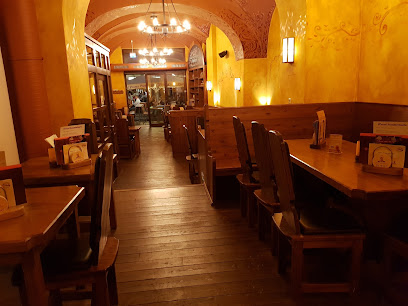
Lerchennest Leipzig
0.2 km
Discover authentic German flavors at Lerchennest Leipzig – where tradition meets taste in a cozy café setting.
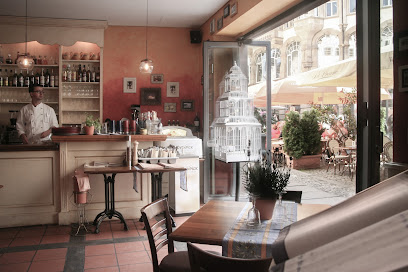
Wagners Restaurant u. Weinwirtschaft Inh. Chris Kollin
0.2 km
Experience authentic German cuisine and fine wines at Wagners Restaurant in Leipzig’s charming beer garden.
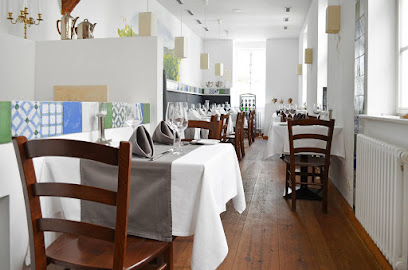
Enchilada Leipzig
0.2 km
Experience authentic Mexican cuisine in Leipzig at Enchilada – where vibrant flavors meet warm hospitality.
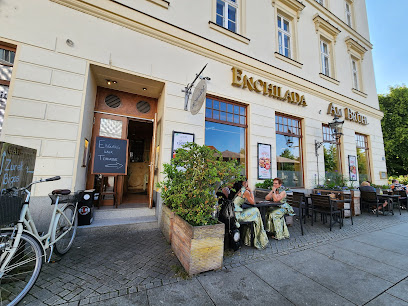
SYNDEO Restaurant Leipzig
0.2 km
Experience culinary excellence at SYNDEO Restaurant Leipzig - where local flavors meet modern dining in a vibrant atmosphere.
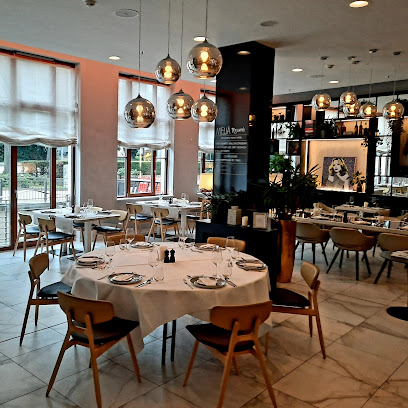
Zills Tunnel
0.2 km
Experience the best of local and international cuisine at Zills Tunnel in Leipzig - where every meal is crafted with passion.
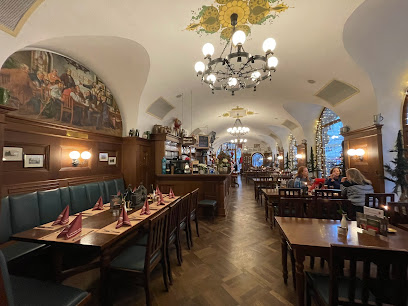
Restaurant Cafe Madrid
0.3 km
Savor the vibrant flavors of Spain at Restaurant Cafe Madrid, where authentic dishes meet warm hospitality in Leipzig's lively atmosphere.
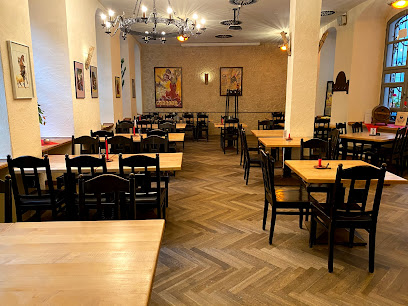
Restaurant Weinstock Leipzig
0.3 km
Discover traditional German flavors at Restaurant Weinstock Leipzig, where culinary excellence meets warm hospitality in the heart of the city.
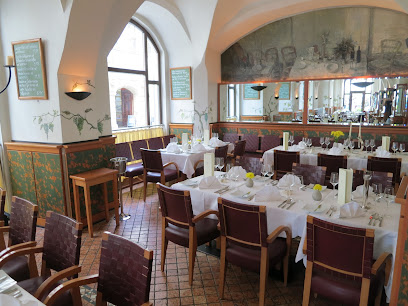
C’est la vie Französisches Gourmet Restaurant - Leipzig
0.3 km
Experience exquisite French cuisine at C’est la vie in Leipzig—where culinary artistry meets elegance in every dish.
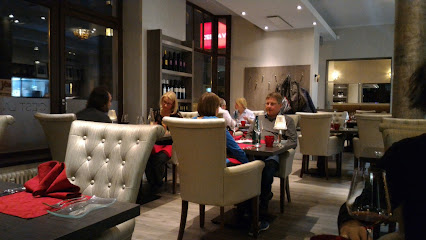
Johann S. Restaurant & Weinbar
0.4 km
Savor authentic German cuisine and fine wines at Johann S. Restaurant & Weinbar in Leipzig's vibrant culinary scene.
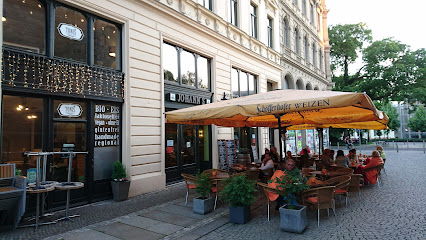
Thüringer Hof
0.5 km
Discover authentic German cuisine at Thüringer Hof in Leipzig – where tradition meets taste in a cozy setting.
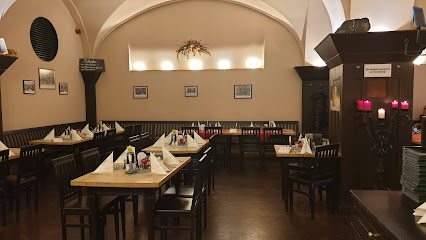
L'Osteria Leipzig
0.5 km
Experience authentic Italian cuisine at L'Osteria Leipzig - where every meal is a delicious journey through Italy's culinary traditions.

Zur Pleißenburg - Leipzig
0.5 km
Discover authentic German cuisine at Zur Pleißenburg, where traditional flavors meet cozy ambiance in the heart of Leipzig.
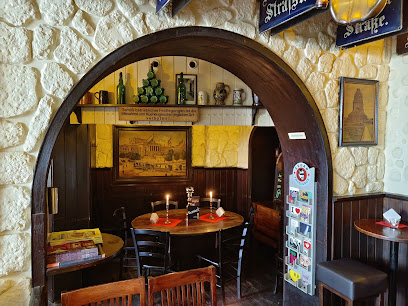
Leos Brasserie
0.5 km
Discover the charm of Leos Brasserie in Leipzig – where exquisite cuisine meets a warm and inviting atmosphere.
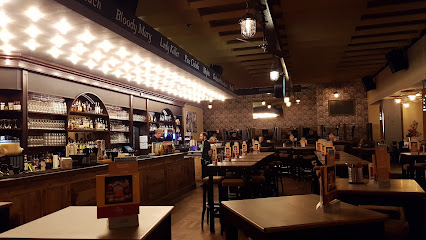
Mythos Restaurant
0.6 km
Experience authentic Greek cuisine at Mythos Restaurant in Leipzig - where every meal is a delightful journey through Mediterranean flavors.
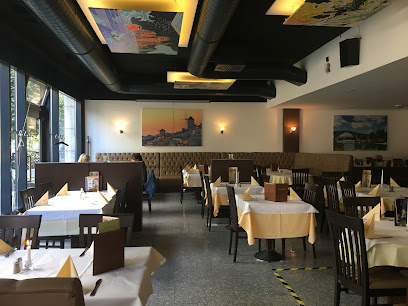
Markets, malls and hidden boutiques
KulturShop Leipzig [ONLINESHOP]
0.2 km
Explore unique cultural treasures at KulturShop Leipzig, your go-to store for books, CDs, and memorable souvenirs in the heart of the city.
![KulturShop Leipzig [ONLINESHOP]](https://evendo-location-media.s3.amazonaws.com/ShoppingImages/08a1db64-c690-4789-ba5f-89f591c59954)
DarXity - Gothic Shop - Leipzig
0.2 km
Explore the captivating world of Gothic fashion at DarXity in Leipzig, your ultimate destination for unique clothing and accessories.
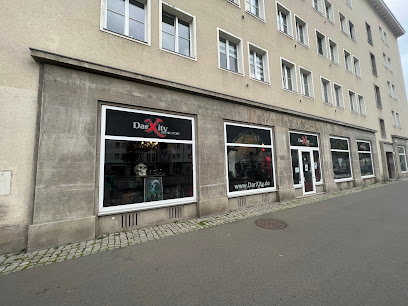
Primark Leipzig
0.2 km
Explore trendy styles at Primark Leipzig, the go-to destination for affordable fashion in the heart of the city.
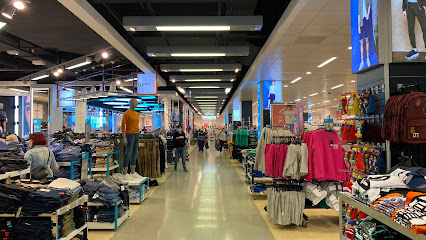
Oxfam Shop Leipzig
0.2 km
Explore Oxfam Shop Leipzig for unique second-hand treasures that support a charitable cause, offering clothing, books, and fashion accessories.
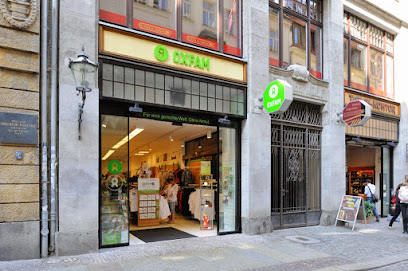
MAX&Co. - Breuninger
0.3 km
Explore the exquisite collection of women's fashion at MAX&Co. - Breuninger, Leipzig's premier boutique destination for style and elegance.

Betty Barclay
0.3 km
Discover stylish elegance at Betty Barclay in Leipzig, where contemporary fashion meets timeless sophistication in the heart of the city.
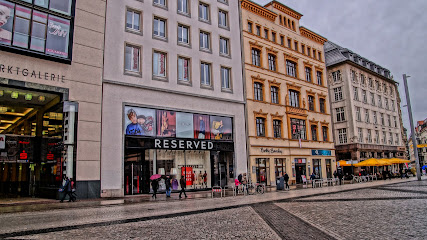
EMP Store Leipzig
0.3 km
Discover unique clothing and music memorabilia at the EMP Store Leipzig, a must-visit destination for fans and fashion enthusiasts.
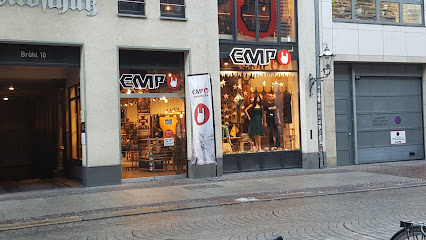
Marktgalerie
0.3 km
Explore the lively Marktgalerie in Leipzig, where shopping meets culture in a vibrant urban setting, perfect for tourists seeking local experiences.
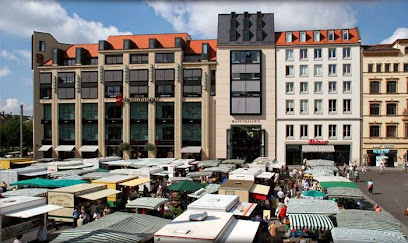
Reserved
0.3 km
Discover the ultimate shopping experience at Reserved in Leipzig, featuring stylish clothing for men, women, and children in a vibrant setting.
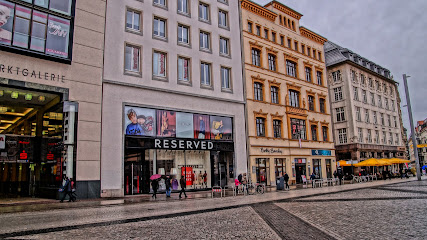
Thomasshop
0.3 km
Discover unique souvenirs and local crafts at Thomasshop, the heart of Leipzig's shopping experience.
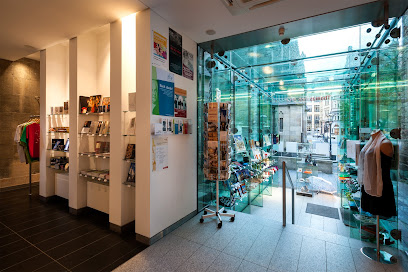
Breuninger Leipzig
0.3 km
Discover the essence of fashion at Breuninger Leipzig, where luxury meets style in a vibrant shopping environment.
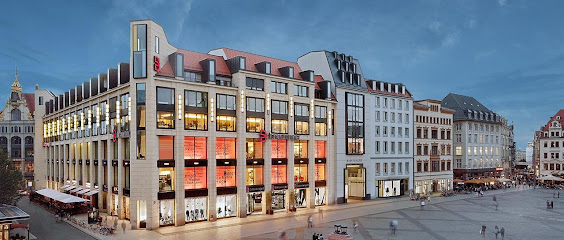
Gems Leipzig Vintage & Secondhand Boutique
0.3 km
Unearth unique fashion treasures at Gems Leipzig, where vintage meets contemporary in a sustainable shopping experience.
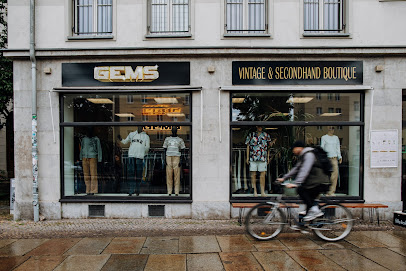
Close Up
0.4 km
Discover unique gifts and local art at Close Up, Leipzig's charming gift shop that captures the city's spirit and creativity.
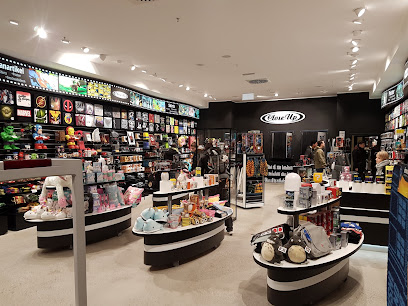
Boutique Marlene
0.4 km
Explore Boutique Marlene in Leipzig for unique clothing and accessories that reflect local style and sustainable fashion choices.
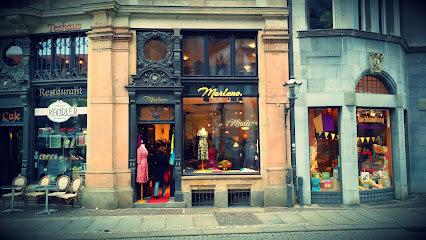
Höfe am Brühl
0.4 km
Experience the best of shopping, dining, and entertainment at Höfe am Brühl, Leipzig's premier shopping destination.
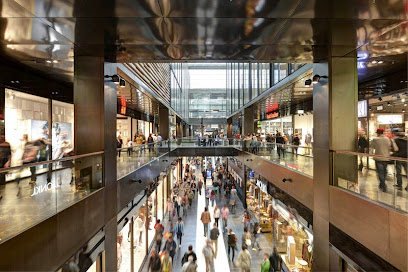
Essential bars & hidden hideouts
Jamboree - Leipzig
0.2 km
Discover the vibrant nightlife of Leipzig at Jamboree, a lively bar offering a unique drink selection and a welcoming atmosphere.
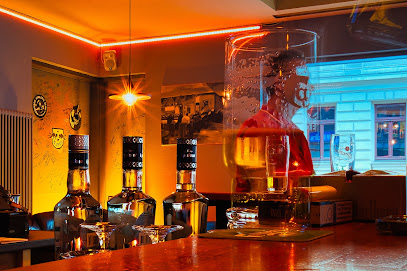
Vodkaria
0.2 km
Discover the vibrant gastropub experience at Vodkaria, Leipzig's premier destination for unique vodkas and lively nightlife.
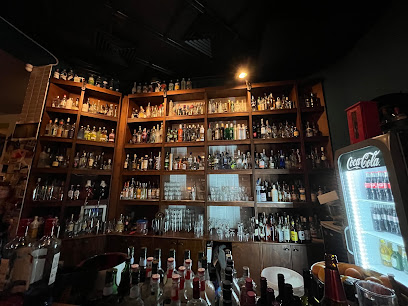
Bar Cabana Dachterrasse - Leipzig
0.2 km
Experience the vibrant atmosphere of Bar Cabana Dachterrasse, Leipzig's rooftop bar with stunning views, exquisite drinks, and delicious cuisine.
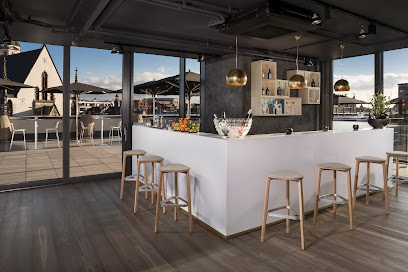
Kildare City Pub
0.3 km
Discover Kildare City Pub in Leipzig for an authentic Irish atmosphere, delicious food, and vibrant sports entertainment.
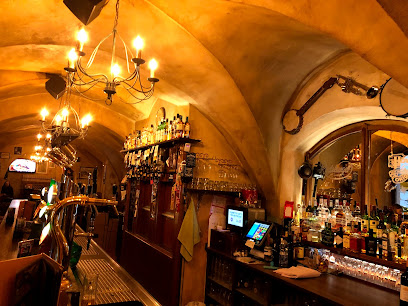
BELLINI'S BAR & RESTAURANT - Leipzig
0.3 km
Experience the vibrant atmosphere of Bellini's Bar & Restaurant, a cocktail bar and café in the heart of Leipzig with delicious food and drinks.
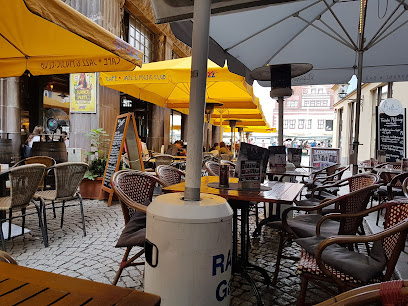
Mephisto Bar
0.5 km
Discover the enchanting Mephisto Bar in Leipzig, where history meets modernity in a cozy atmosphere with exceptional drinks.
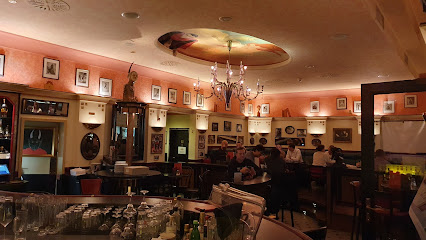
Goldhopfen - Craft Beer Bar Leipzig
0.5 km
Discover Goldhopfen, Leipzig's premier craft beer bar, offering an eclectic selection of brews in a vibrant and welcoming atmosphere.
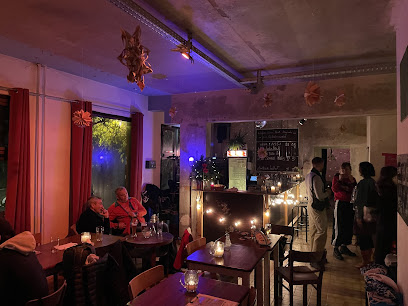
Stoned Bar- the home of punk n roll - Leipzig
0.5 km
Experience the vibrant punk n roll culture at Stoned Bar in Leipzig, featuring live music, delicious food, and an eclectic atmosphere.
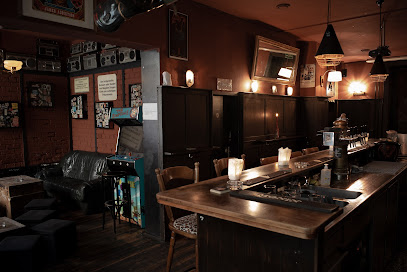
Dhillons
0.5 km
Experience the vibrant spirit of Ireland at Dhillons, Leipzig's beloved Irish pub and sports bar, perfect for tourists seeking great food and lively entertainment.
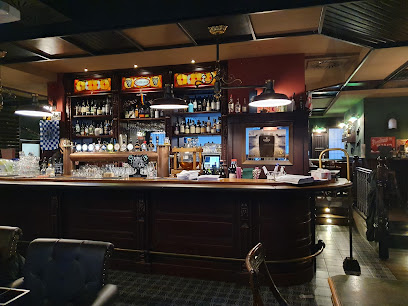
Piano Bar Leipzig
0.5 km
Experience the vibrant atmosphere of Piano Bar Leipzig, where exquisite cocktails and live music create unforgettable moments in the heart of the city.
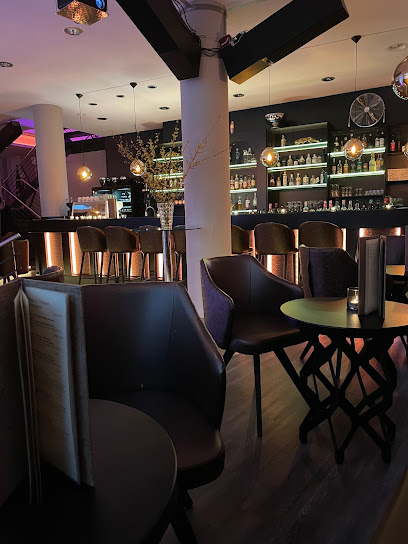
Brick's der Cocktail
0.6 km
Discover the vibrant cocktail culture at Brick's der Cocktail, a must-visit bar in Leipzig for unforgettable drinks and an electric atmosphere.
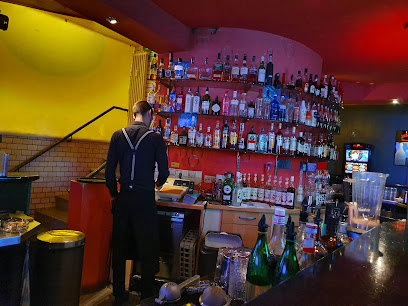
Sonderbar - Leipzig
0.6 km
Experience the vibrant atmosphere and innovative cocktails at Sonderbar in Leipzig, the perfect spot for night owls and cocktail enthusiasts.
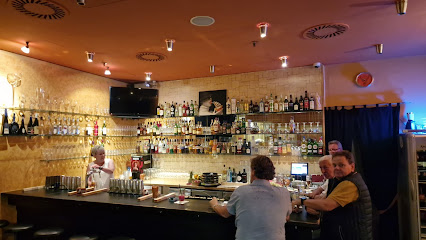
Tonelli's Leipzig
0.6 km
Explore the vibrant nightlife of Leipzig at Tonelli's, a lively live music bar and pub offering delicious food and unforgettable performances.
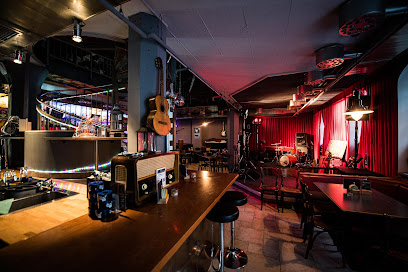
The First Whisk (e) y Bar Leipzig - Leipzig
0.6 km
Discover the ultimate whisky experience at The First Whisk(e)y Bar in Leipzig, featuring over 600 whiskies and an inviting ambiance to unwind.
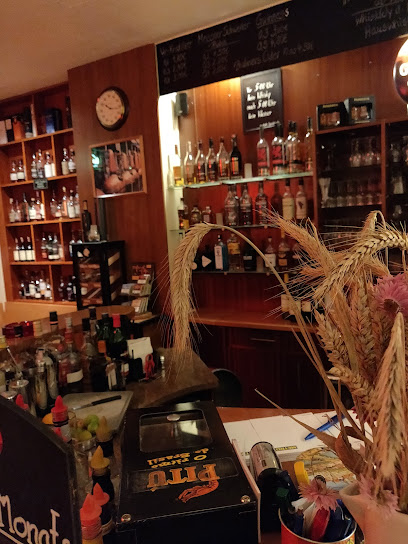
FALCO BAR
0.7 km
Falco Bar: Indulge in exquisite cocktails and elegant ambiance in the heart of Leipzig's nightlife.
